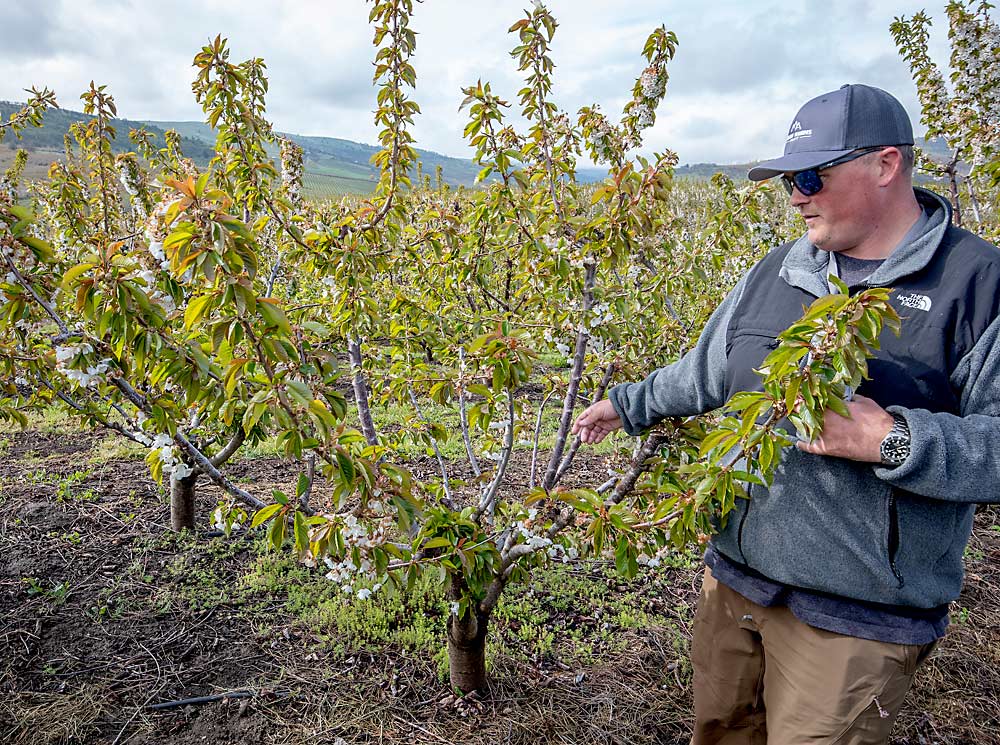
In the Pacific Northwest’s Columbia Gorge, some growers are turning away from the pedestrian KGB training system — a central feature of the cherry landscape here — for some varieties.
Struggling to develop precocious renewal wood, several growers in The Dalles, Oregon, recently told Good Fruit Grower they are converting some of their KGB trees to central leader or steep leader.
Devon Wade, a second-generation grower in The Dalles, recently converted Skeena, Sweetheart, Benton and Bing blocks from KGB to steep leader.
“Production was really dropping off,” he said.
The Kym Green Bush system, named for an early adopting Australian grower, began proliferating in the Columbia Gorge in the late 1990s, as growers looked for ways to reinvent themselves for the fresh industry after the collapse of the maraschino cherry market. At the invitation of industry groups, Green visited several years in a row, teaching the growers in the hills surrounding The Dalles how to make the tricky renewal cuts on which the system relies.
Today, the KGB system is by no means disappearing. Wade, for example, has kept several rows of KGB Chelans, which he said maintain spurs instead of vegetative growth. Other growers have new plantings on KGB systems.
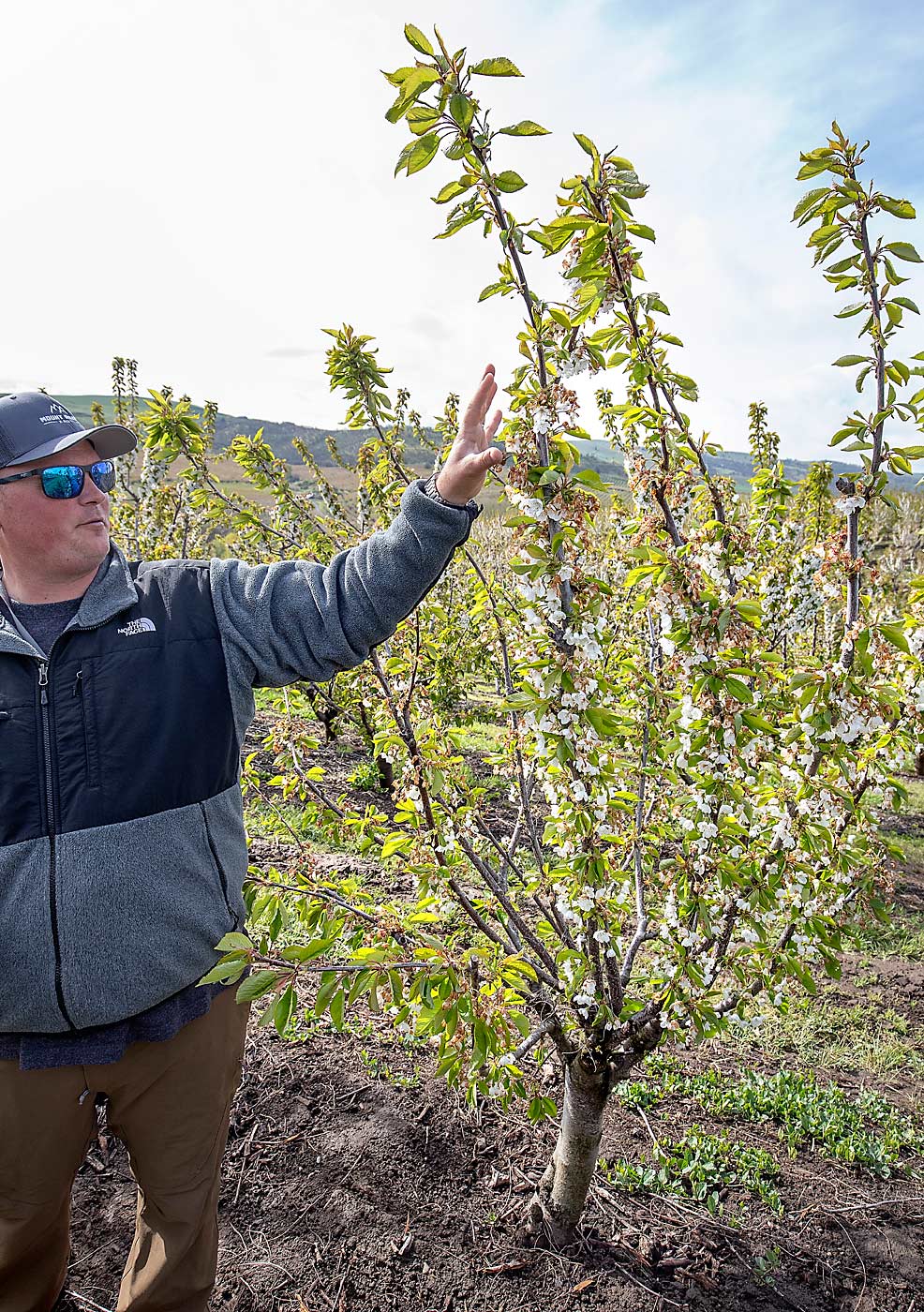
Growers are just being choosier about which varieties work well for the system, which is prized for its compact, pedestrian shape, said Ashley Thompson, Oregon State University horticultural extension specialist.
Thompson’s worry is what system they choose instead.
“I’m seeing people moving back toward steep leader, which is concerning to me,” she said.
She sympathizes with growers wanting to return to systems they know, but steep leaders don’t lend themselves to the region’s overall move toward efficiency and mechanization. She would prefer that they convert to a high-efficiency planar system.
If growers complain about KGB, it’s usually about renewal growth.
The system relies on encouraging fruit to develop on younger upright branches that must be renewed every few years while still maintaining vigor balance in the trees. UFO, another high-density system that encourages uprights in a plane, has similar problems, said Lynn Long, Thompson’s retired predecessor.
Those renewal branches don’t always grow the way growers envision. “You don’t always get that break,” he said. Over time, that cuts down on the tree’s fruiting potential.
Also, KGB and UFO trees want to throw laterals as they age, Long said, making renewal cuts even more critical and problematic.
“Because of that difficulty, some growers have given up on the system,” Long said.
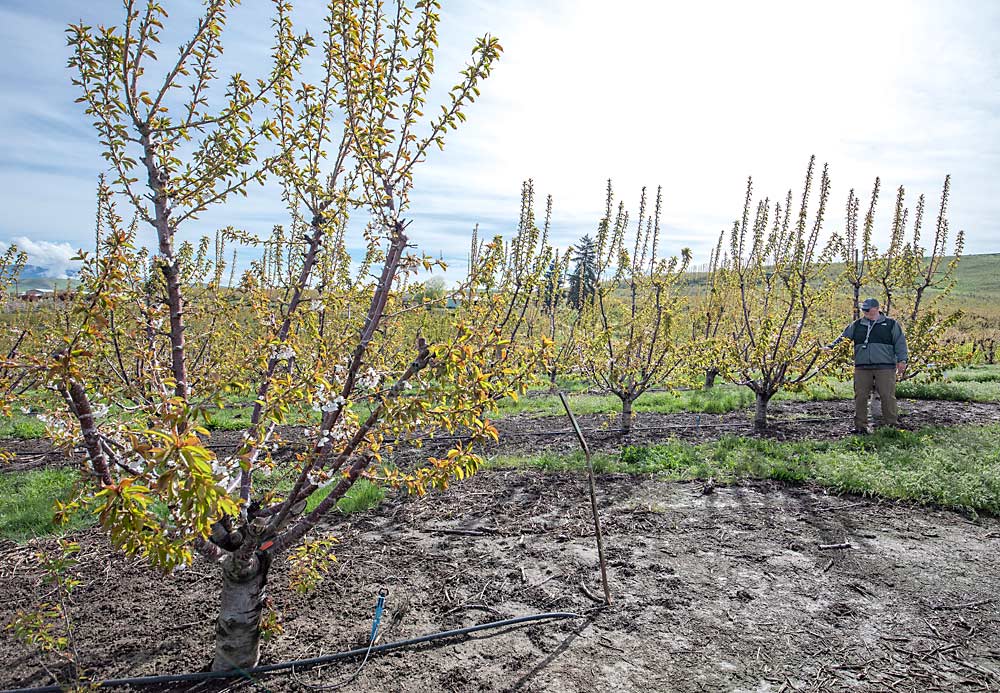
A case for conversion
For Wade, KGB sounded great, in theory, for its simplicity.
“I can teach somebody how to prune a KGB tree in five minutes,” he said. “Whereas, pruning a steep leader or a central leader, there’s a little bit of art and experience to it.”
However, as time went on for his KGB trees, he noticed spurs were getting shaded out or accidentally pulled off by pickers.
Meanwhile, the ladderless harvest aspect began to backfire. Pickers stretched up to reach the 8-foot-high top branches, sometimes pulling cherries off their stems and damaging the fruit or ripping off next year’s spurs. He instructed them to use ladders, which of course they didn’t like.
He also noticed his workers reaching around branches to hunt for fruit hanging tight against vertical limbs, instead of dangling from horizontal limbs. Today, his fastest picking blocks are on steep and central leaders, Wade said, despite the ladders they require.
In late April, Wade showed Good Fruit Grower a block of Bings on Krymsk 6 rootstocks, planted in 2014 as a KGB double row. The Bings never produced more than 6 tons per acre, even at the relatively high density. So, he converted them in 2020, beginning what he considers a two-year process of choosing three to five leaders and using a chain saw to make bench cuts that encourage lateral branches that will produce fruit. He also leaves more young fruiting wood intact, especially near the tops of trees, to mitigate vigor during the transition.
“Last year (halfway through the conversion) we picked almost as much off this block as we’ve ever picked,” he said. The fruit came off before the 2021 heat wave. This year, he expected another record crop, even with the reduced load due to poor pollination weather.
In a nearby block, he used the same process during the winter of 2021–2022 to convert a 2011 planting of Bings on Krymsk 6.
Wade favors switching to steep leader. His neighbor, Mike Manning, chooses central leader, sending fruitful side branches from one central upright. He has recently converted KGB blocks of Suite Note, Skeena and Benton.
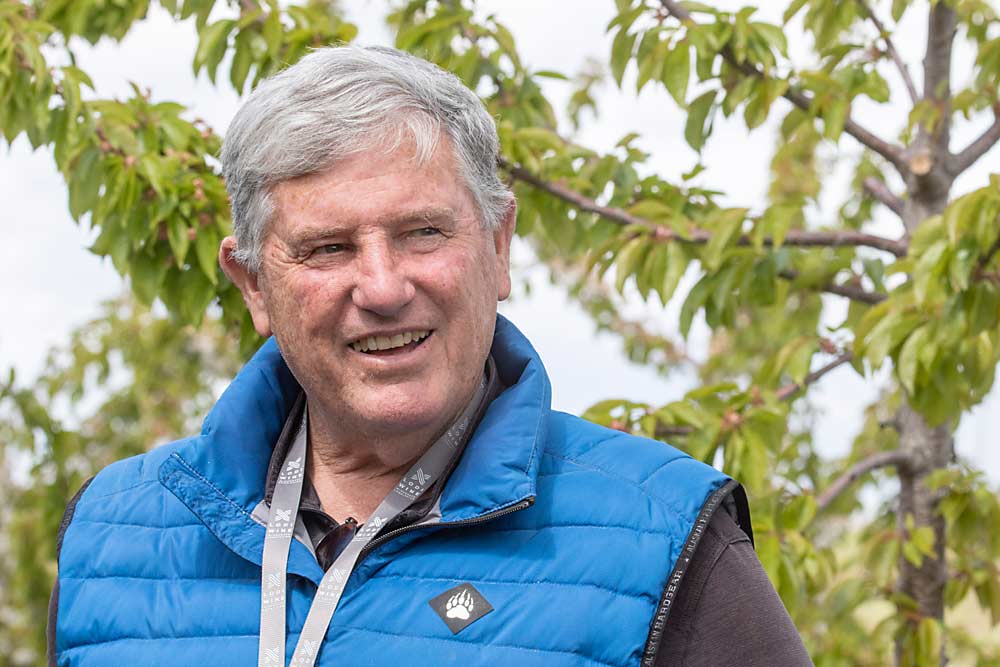
For the first four or five years, KGB was “the best system in the world,” Manning said. But after years six or seven, he started noticing the struggle to get enough return shoots from the recommended renewal cuts.
He still uses the KGB system for Bing and Chelan, varieties that he’s seen respond to renewal cuts with fresh shoots, he said.
He has not noticed a rootstock pattern to his KGB struggles.
Manning also follows a two-year process of conversion, and he’s happy with the results, he said. His only concern is that his converted trees are spaced 7 feet apart, a little tight for central leader in his preference, though plenty of other growers make it work, he said.
Conversions aside, he is thankful for KGB.
“My orchard has benefited from it tremendously,” he said.
The trees started out productive and, more importantly, ushered him into the high-density business of sweet cherry farming. He recalls countless hours and corrections on pruning techniques from Green.
Many of the lessons apply to his central leader system, too. For example, Green encouraged him to leave a 4-inch stub when renewal pruning, to avoid scarring the central leader.
“It was great to have that education,” Manning said.
—by Ross Courtney

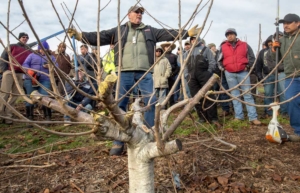





Leave A Comment